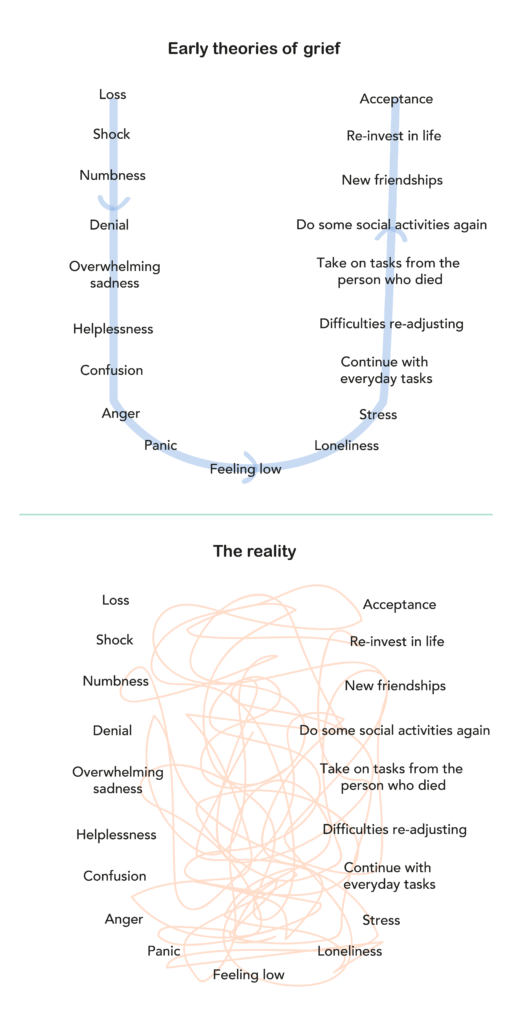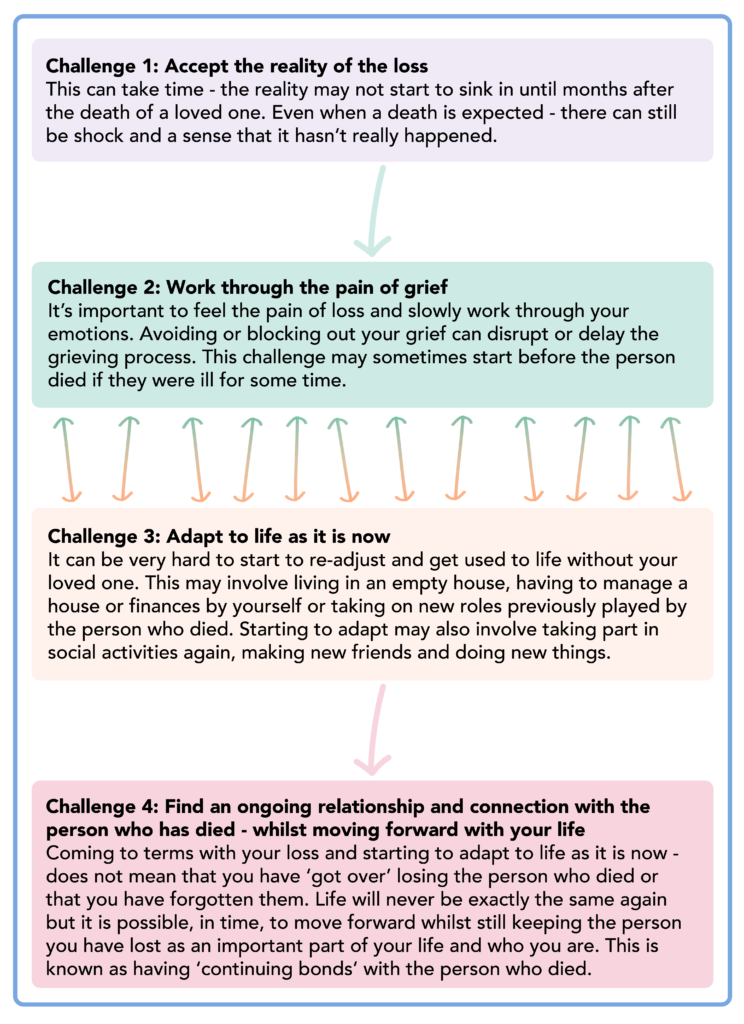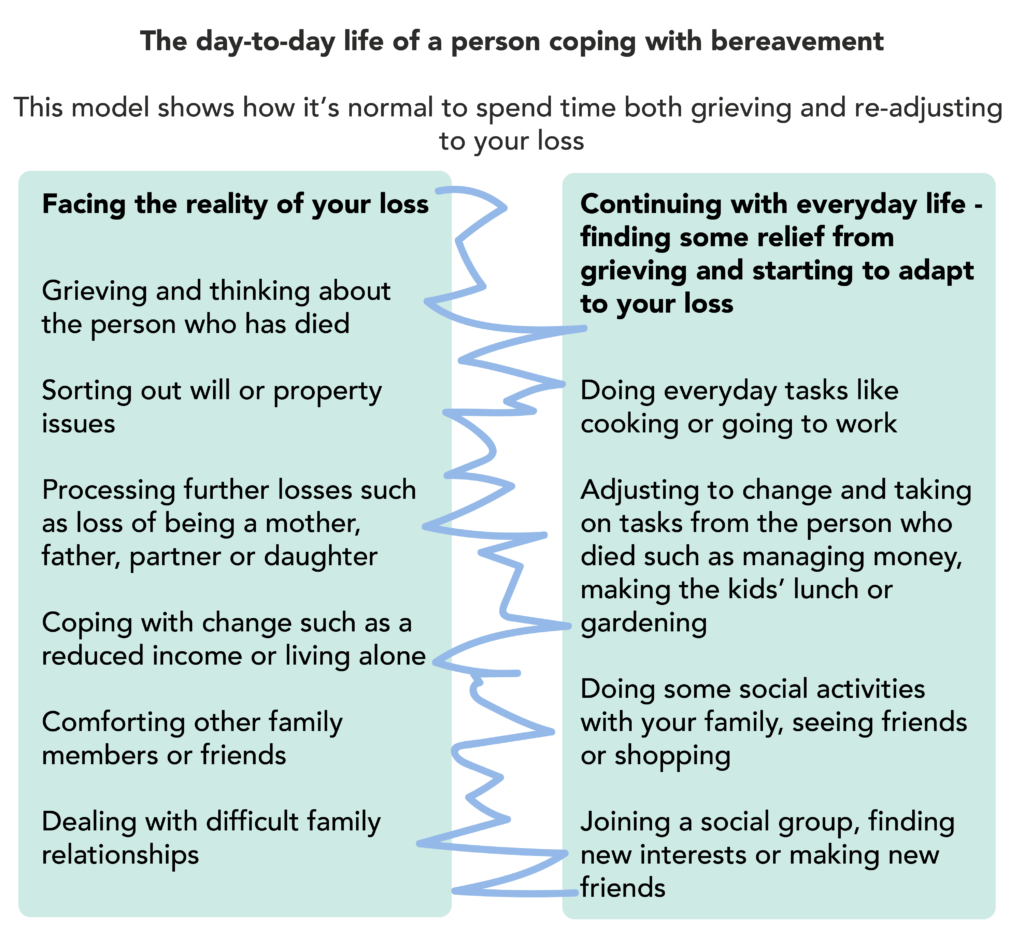You may be familiar with theories of grief that suggest we go through different stages such as shock, denial and anger until finally ‘getting over’ the loss.
Our ideas about the grieving process have changed. The Stages of Grief Model shows how life is often much more messy and complicated than that. You are likely to have many ups and downs, good days and bad as you start to adjust to your loss.

The Stages of Grief Model
Every bereavement is different and there isn’t one model that describes everyone’s experience. Some people may find that one or more of the following diagrams help them to better understand their own individual journey.
The 4 Challenges of Grief Model
This model highlights the 4 challenges we face during the grief journey and can help us understand what needs to happen to process a bereavement.

The 4 Challenges of Grief Model
The 2-Way Grief Model
This model shows the day-to-day life of a person coping with bereavement. It can help you understand how spending time both facing the reality of loss and getting on with everyday life is a normal part of bereavement.

The 2-Way Grief Model
How long should it take to ‘recover’ from a bereavement?
There’s no timeframe for how long the grieving process should last and everyone is different.
Some people may start to feel better in a few weeks or months – other people may take one to 2 years or more. As a general rule – the intensity of someone’s grief usually reflects the:
- importance of their loss
- nature of their relationship with the person who has died
- circumstances of the death
So the grieving process is likely to be more difficult and go on for longer for someone who is grieving for a partner or close relative. But, someone may also grieve very deeply for a friend, neighbour or school teacher with whom they had developed an important ‘bond’. Likewise, someone’s feelings for losing a close relative may be complicated or conflicted if the relationship was difficult or estranged.
Other factors can also affect how someone grieves, as well, such as:
- the way they have grieved for earlier losses
- lack of social support or someone to talk to
- other life stresses
- mental or physical health problems
- other losses felt such as no longer being a mother, partner or daughter, for example, or the loss of other relationships or family ties connected to the person who died
Unfortunately, there is no short-cut to grieving. Be patient with yourself. Don’t expect too much too soon. It’s important to slowly work through your emotions because grief is the process by which we start to come to terms with loss.
Starting to adapt to life as it is now, does not mean that you have ‘got over’ losing your loved one or that you’ve forgotten them. It’s important not to feel guilty if you’re beginning to put energy into rebuilding your life following a death. It’s quite normal to start to look forward and is in no way disloyal to the memory of the person who has died. Life will never be exactly the same again. As time goes by you’re still likely to feel deep emotions when you remember them – especially at important times like birthdays, Christmas, special family events and anniversaries.
Trying to avoid your grief, turning to work as a distraction or trying to appear ‘brave’ and ‘strong’ can disrupt this process. Men, in particular, may think it will be a sign of weakness to show their emotions or to cry in public. Someone who doesn’t feel able to grieve properly, release their pain and process their feelings may start to experience emotional problems. They may also resort to unhelpful ways of coping or may find there are times when they’re taken by surprise and overwhelmed by their emotions.
